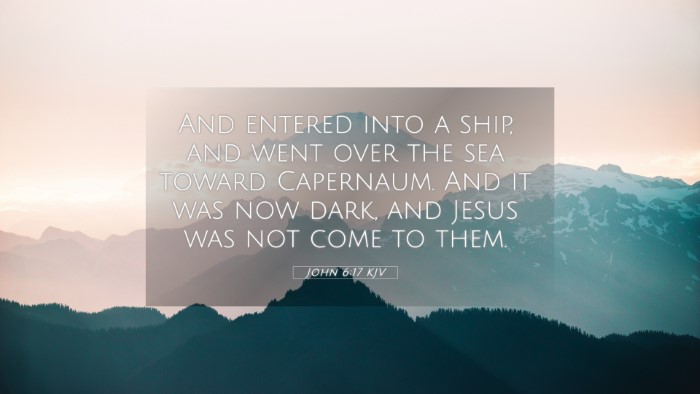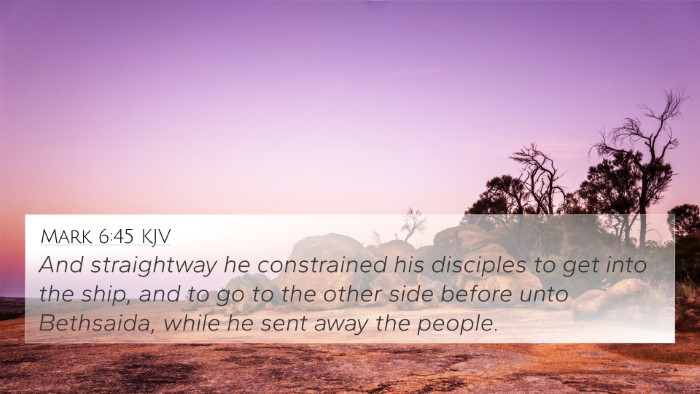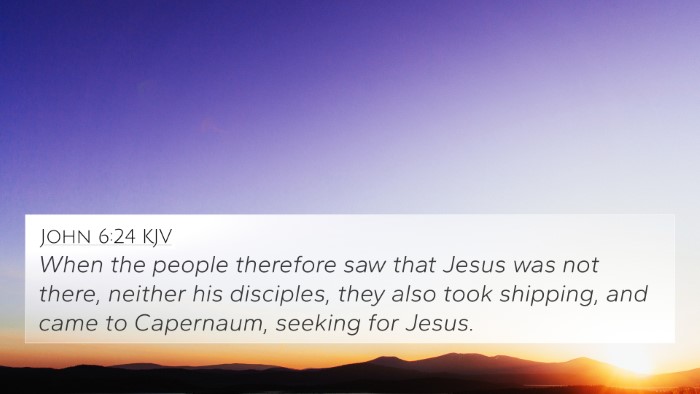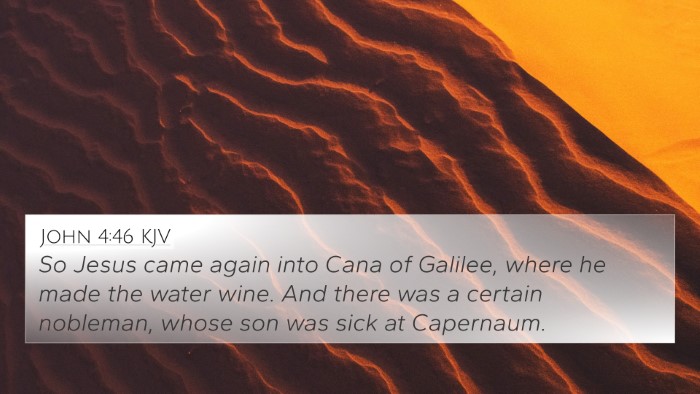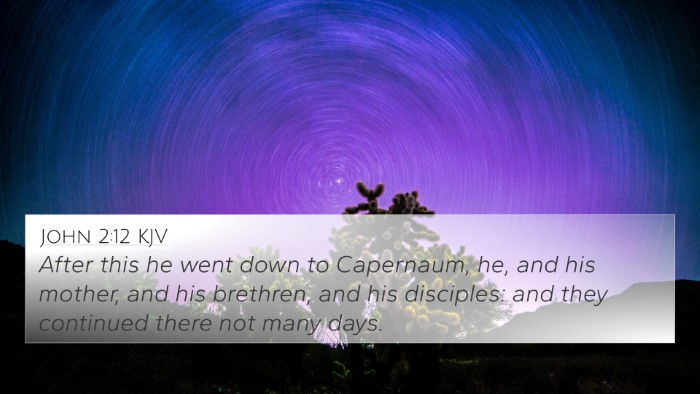Understanding John 6:17
John 6:17 states:
"And entered into a ship, and went over the sea toward Capernaum. And it was now dark, and Jesus was not come to them." (John 6:17 KJV)
This verse occurs in a profound context where the disciples are in a boat on the Sea of Galilee following the feeding of the 5000. In examining the meaning of this verse, we can draw insights from various public domain commentaries that shed light on its significance.
Contextual Background
Understanding John 6:17 requires a grasp of the surrounding events. Let’s explore the implications and observations from several biblical scholars.
Insights from Commentaries
-
Matthew Henry:
Henry emphasizes the importance of the disciples’ journey. The phrase "and entered into a ship" suggests their willingness to act in obedience. However, the darkness and the absence of Jesus highlight human vulnerability in challenging situations.
-
Albert Barnes:
Barnes comments on the physical and metaphorical aspects of the sea. The Sea of Galilee represents a tumultuous environment where doubt and fear can emerge when one feels alone, just as the disciples did without Jesus in the boat.
-
Adam Clarke:
Clarke notes that the journey to Capernaum without Jesus symbolizes the struggles believers face in their spiritual walk. He highlights that while Jesus may seem absent, His presence is always spiritually established in our lives.
Thematic Analysis
The verse connects to key themes in the Gospel of John, particularly the themes of faith, guidance, and the presence of Christ even in perceived absence.
-
Faith in Darkness:
The disciples’ experience during darkness acts as a metaphor for spiritual darkness when Jesus appears absent in our lives.
-
Divine Guidance:
The verse encourages believers to trust in God's guidance even when circumstances are dire or confusing.
Bible Verses Cross-References
Understanding John 6:17 can be enriched through various Bible verses that relate to its themes and content. Below are recommended cross-references:
- Matthew 14:22-23 – Jesus walks on water, showcasing His authority over nature and comfort amid fears.
- Mark 6:45-52 – The account of Jesus walking on water, revealing His power and the need for faith from the disciples.
- John 6:1-14 – The miraculous feeding of the 5000, establishing the preceding miracle's significance to the event in 6:17.
- John 8:12 – Jesus as the light of the world, relevant to understanding the darkness faced by the disciples.
- Isaiah 43:2 – A promise that God is with His people through trials, correlating with the disciples’ experience on the sea.
- Psalms 77:19 – "Thy way is in the sea," reminding believers of God's leadership through uncertainty.
- 2 Corinthians 5:7 – "For we walk by faith, not by sight," a relevant encouragement for believers navigating life’s seas.
Connections Between Bible Verses
Linking Bible scriptures can illuminate deeper truths and help to form a comprehensive understanding of John 6:17. Here are several points of connection:
-
Inter-Biblical Dialogue:
Both the Old and New Testament speak to God's steadfast presence amidst human adversity, connecting John's Gospel with Psalms and Isaiah.
-
Comparative Bible Verse Analysis:
Consider the parallel of the disciples' fear in John 6:17 with Israel's journey through the Red Sea, reflecting the theme of divine deliverance.
How to Use Bible Cross-References
Tools for Bible cross-referencing include concordances and cross-reference Bibles that guide the reader in tracing thematic links across scripture.
Conclusion
John 6:17 serves as a poignant reminder of the human experience of fear and uncertainty in the absence of Christ. By drawing upon thoughtful commentaries and cross-referencing relevant scriptures, believers can find assurance in God's ongoing presence and guidance. Embracing a cross-reference Bible study method enhances the depth of understanding and reinforces faith in the scriptures.
Further Exploration
Interested individuals can further hone their skills in identifying connections between Old and New Testament teachings by using resources such as:
- Thematic guides for Bible study.
- Comprehensive Bible reference resources for deeper exploration.
- Bible cross-reference systems to connect various passages.

